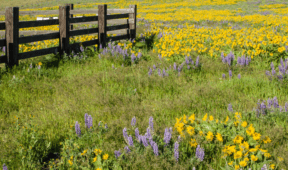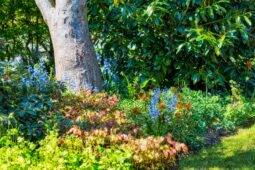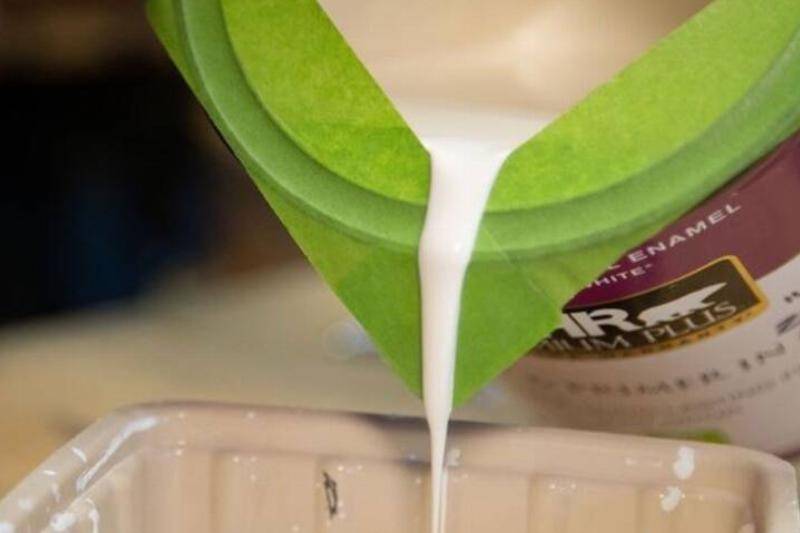DIY Gardening Tips To Liven Up Any Sized Yard
Imagine stepping into your backyard and being transported to a lush, vibrant oasis of your own creation. With a little creativity and some elbow grease, you can turn any outdoor space into a stunning garden retreat. Whether you have a sprawling yard or a tiny balcony, these 25 DIY gardening tips will help you breathe new life into your outdoor area and create a space you’ll love spending time in.
1. Create Distinct Garden Zones
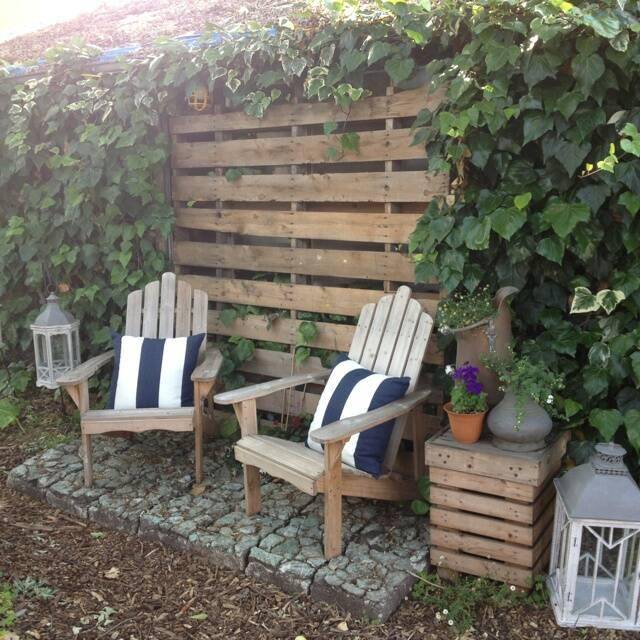
Divide your outdoor space into different functional areas to maximize its potential. Create a cozy seating area for relaxation, a dining zone for al fresco meals, and a play area for kids or pets. Use outdoor rugs, planters, or different flooring materials to define each space.
This zoning technique helps organize your garden and creates a sense of purpose for each area. It also allows you to tailor different sections of your garden to specific needs or activities, making the most of your outdoor space.
2. Create Garden Art from Rubble and Debris
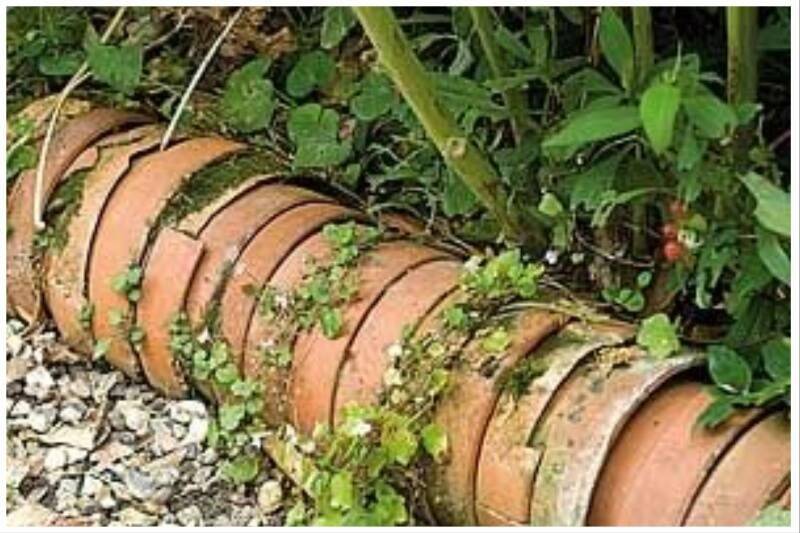
Turn yard waste and broken materials into beautiful garden features. Use broken bricks to create winding pathways or build small retaining walls. Repurpose old tiles to make colorful mosaic stepping stones or decorative garden borders.
This sustainable approach not only saves money but also adds unique textures and visual interest to your garden. Get creative with different materials and experiment with various designs to create a truly one-of-a-kind outdoor space.
3. Perfect Your Lawn for a Lush Foundation
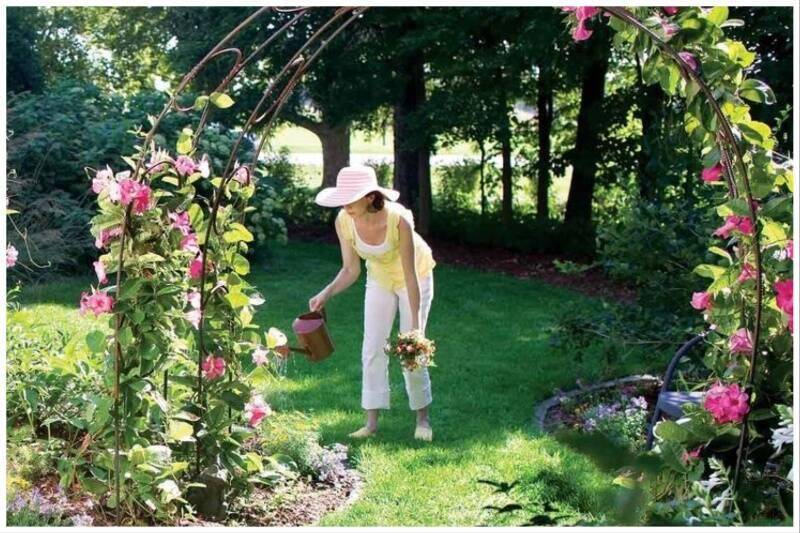
A well-maintained lawn sets the stage for a beautiful garden. Regular mowing, weeding, and edging keep your grass healthy and looking its best. Consider overseeding bare patches and applying organic fertilizers to promote lush growth.
Don’t forget to aerate your lawn annually to improve drainage and reduce soil compaction. A healthy lawn not only looks great but also provides a perfect backdrop for your garden beds and landscaping features.
4. Elevate Your Plants for Visual Interest
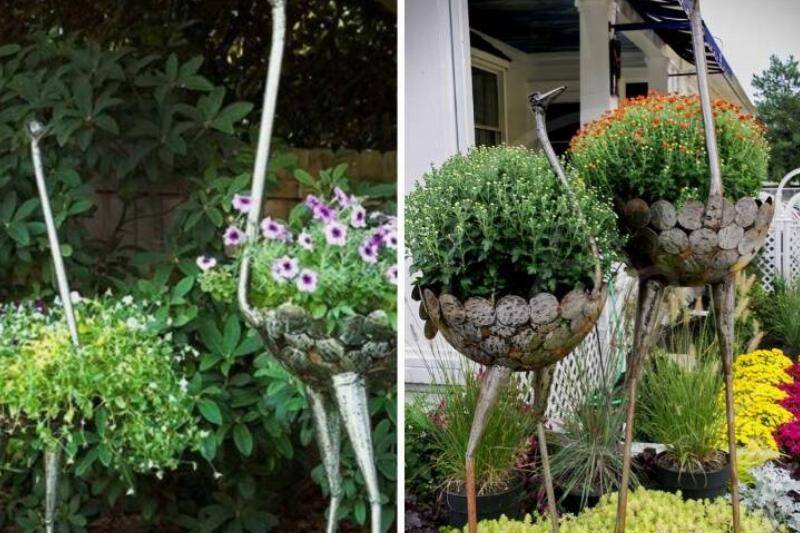
Create depth and dimension in your garden by using various heights for your plants. Place potted plants on tables, stools, or raised platforms to add vertical interest. Use hanging baskets and wall-mounted planters to maximize space and draw the eye upward.
Experiment with different container sizes and styles to create a dynamic display. This technique is especially useful for small gardens or balconies where floor space is limited, allowing you to grow more plants in a compact area.
5. Use Mirrors to Create Illusions of Space
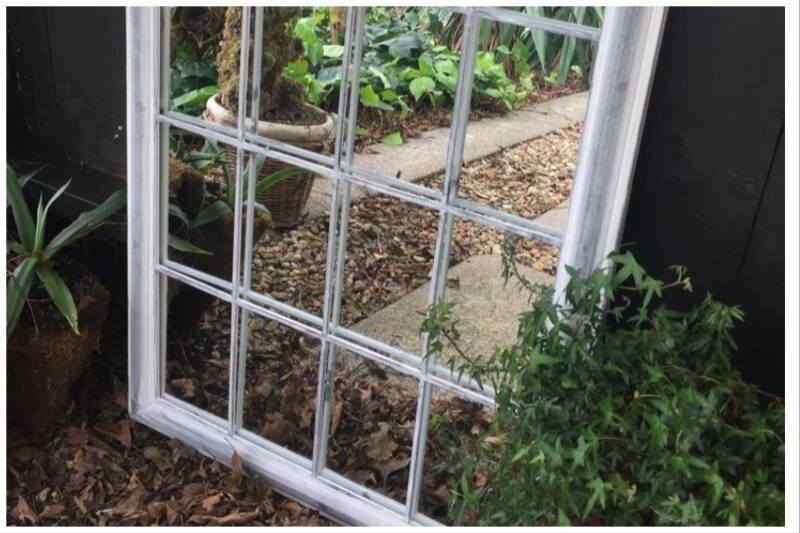
Incorporate mirrors into your garden design to create the illusion of more space and reflect light. Hang old mirrors on garden walls or fences to add depth and brightness to shaded areas. Create a focal point by placing a large mirror at the end of a pathway.
For a whimsical touch, use mosaic mirror pieces to decorate planters or create garden art. Mirrors not only make your garden appear larger but also reflect the beauty of your plants and flowers throughout the space.
6. Paint Garden Structures for a Pop of Color
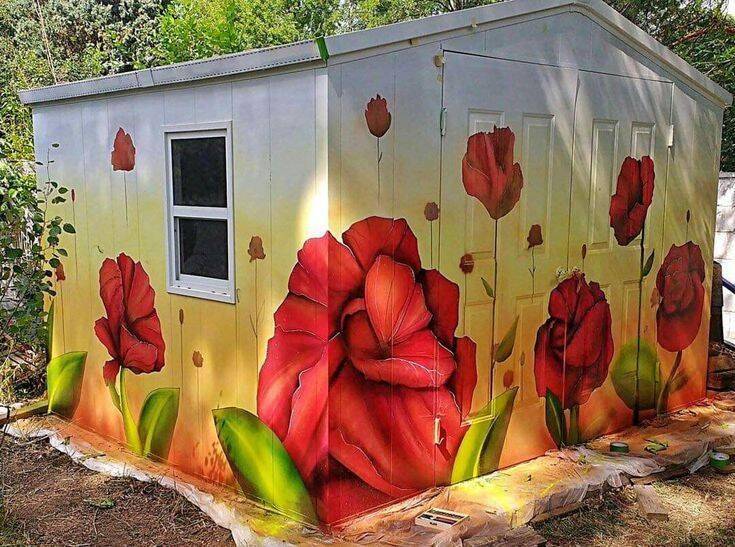
Breathe new life into garden structures with a fresh coat of paint. Paint a dull shed or greenhouse in bold, cheerful colors to transform it into a vibrant focal point. Consider using complementary colors to make your plants and flowers stand out.
Don’t forget about garden furniture – give old benches, tables, and chairs a new lease on life with weather-resistant paint. This simple update can completely change the look and feel of your outdoor space.
7. Create a Sunflower Sanctuary
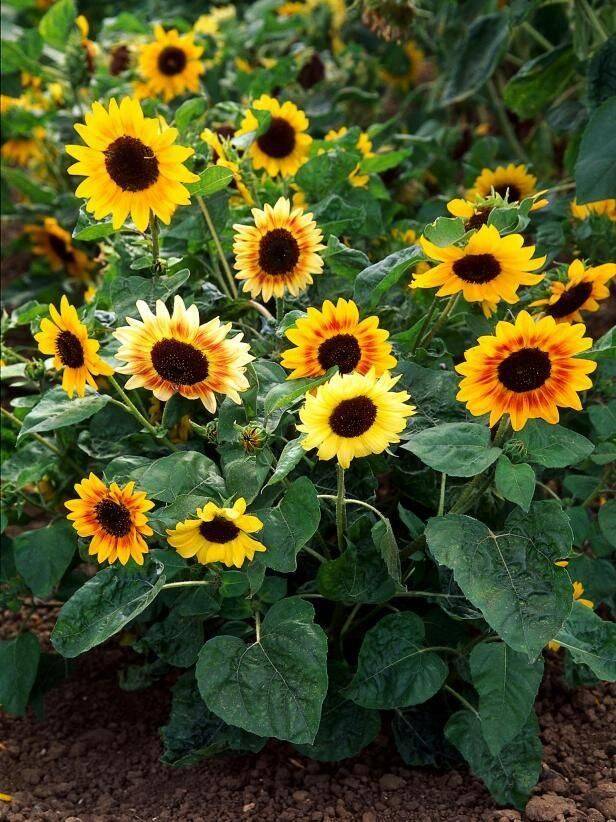
Plant a variety of sunflowers to create a natural, colorful privacy screen in your garden. Choose different heights and colors to add visual interest and depth. Sunflowers not only provide a beautiful backdrop but also attract pollinators and birds to your garden.
Create a cozy seating area surrounded by these towering beauties for a perfect summer retreat. As an added bonus, you can harvest the seeds for snacking or replanting next season.
8. Design Unique Shaped Planters
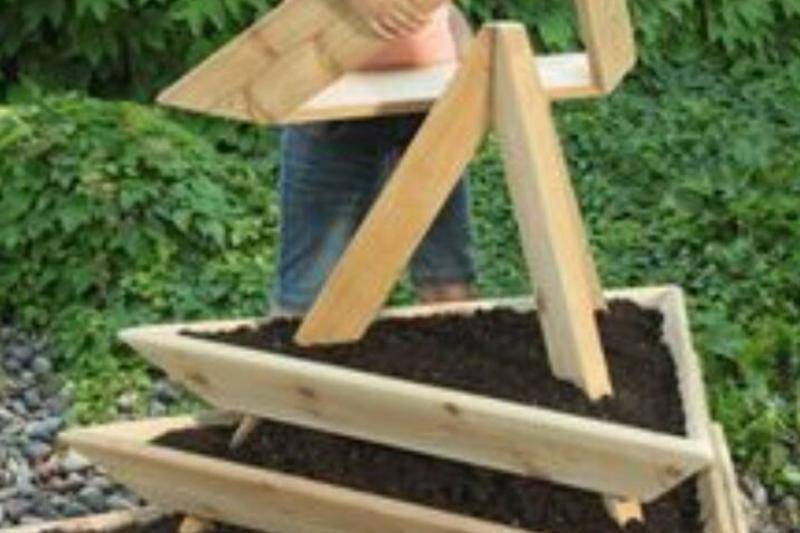
Add a geometric twist to your garden with custom-shaped planters. Use wooden boards to create triangular, hexagonal, or other uniquely shaped raised beds. Paint them in bold colors or leave them natural for a rustic look.
These eye-catching planters can serve as focal points in your garden and allow you to experiment with different plant combinations. Consider using them to separate different areas of your garden or to create a modern, sculptural element in your outdoor space.
9. Transform Tables into Outdoor Game Boards
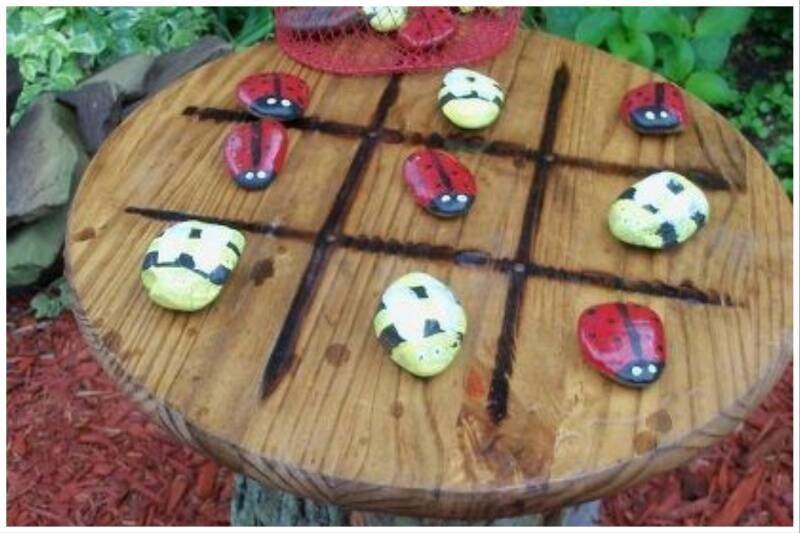
Give old patio tables a new purpose by turning them into outdoor game boards. Paint a chess or checkers board directly onto the tabletop for endless entertainment. For a more whimsical touch, create a colorful snakes and ladders board or a custom garden-themed game.
These repurposed tables not only provide fun activities for outdoor gatherings but also serve as unique decorative elements in your garden. Place them in a shaded area to create a perfect spot for family game nights or afternoon tea.
10. Repurpose Old Furniture for Garden Magic
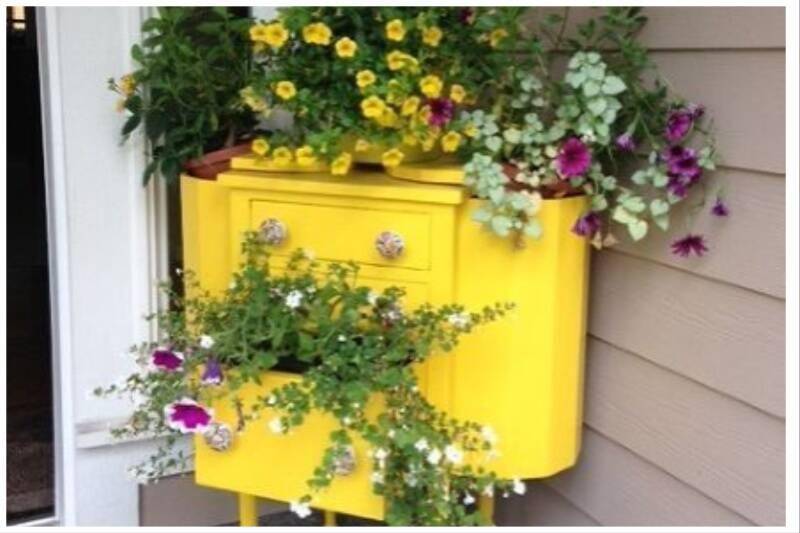
Give new life to old furniture by transforming it into unique garden features. Paint an old dresser in a bright color and use it as a planter box. Convert broken chairs into rustic garden benches or repurpose cabinets as vertical planters.
With a little imagination, you can create one-of-a-kind pieces that add character to your garden. These upcycled items not only save money but also reduce waste and give your outdoor space a personalized touch.
11. Embrace Unique Plant Shapes and Textures

To add visual interest to your garden, incorporate plants with interesting shapes, patterns, and textures. Mix succulents, cacti, and other sculptural plants with traditional flowers and foliage. Look for plants with variegated leaves, unusual growth habits, or striking silhouettes.
This diverse plant selection creates a dynamic and eye-catching garden landscape. Experiment with different combinations to create contrast and harmony in your plant beds and containers.
12. Build a Vertical Plant Wall
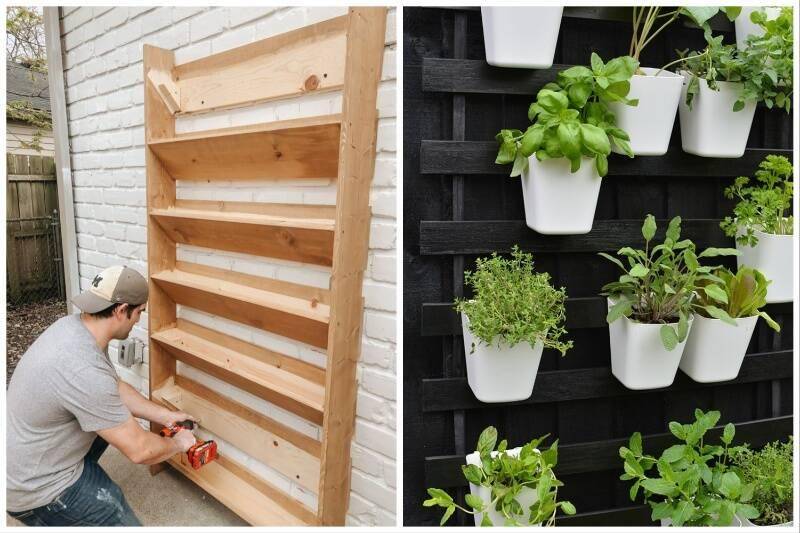
Maximize your garden space by creating a vertical plant wall. Repurpose old pallets, shutters, or build custom frames to hold a variety of plants. This technique is perfect for small gardens and balconies or to cover unsightly walls or fences.
Plant a mix of trailing vines, succulents, and small flowering plants to create a lush, living tapestry. Vertical gardens not only save space but also create a stunning visual impact and can help improve air quality in urban environments.
13. Craft a Stepped Planter Display
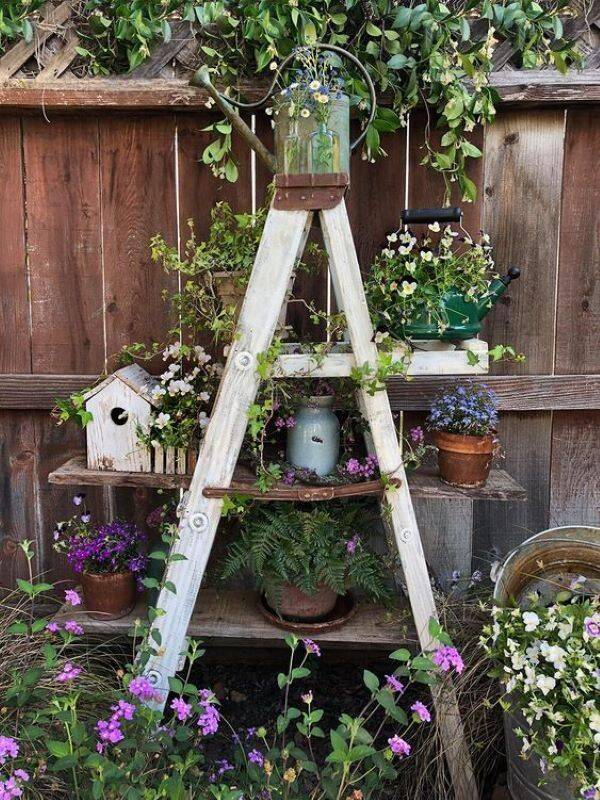
Build a stepped planter display to showcase your favorite plants and create vertical interest in your garden. Use reclaimed wood or old ladders to create a tiered structure. Paint it in a color that complements your garden theme, or leave it natural for a rustic look.
Fill each level with different plants, creating a cascading effect of colors and textures. This DIY project is not only visually appealing but also helps maximize space in small gardens or on patios.
14. Upcycle Tires into Colorful Planters

Give old tires a new lease on life by transforming them into unique garden planters. Clean the tires thoroughly, paint them in bright colors or patterns, and stack them to create tiered planters. Fill them with soil and your favorite flowers or vegetables.
These upcycled tire planters are not only eco-friendly but also add a playful, whimsical touch to your garden. They’re perfect for creating raised beds or as standalone features in children’s play areas.
15. Repurpose Tables as Mini Gardens
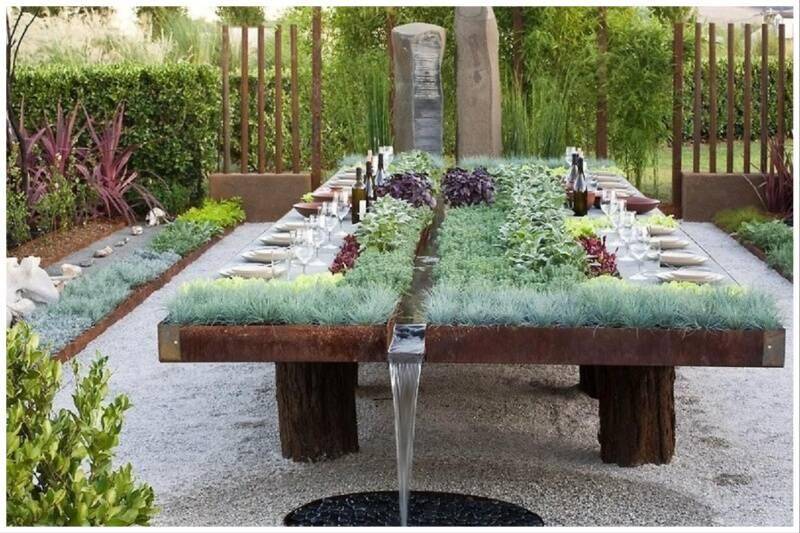
Turn old tables into charming mini gardens by filling the tabletop with soil and plants. Remove the glass top from outdoor tables and replace it with a layer of landscape fabric and soil. Plant succulents, herbs, or small flowering plants directly into the table.
These repurposed table gardens make great conversation pieces and can be used to create unique outdoor dining experiences. They’re also perfect for small spaces where traditional garden beds aren’t feasible.
16. Create Raised Beds from Reclaimed Materials
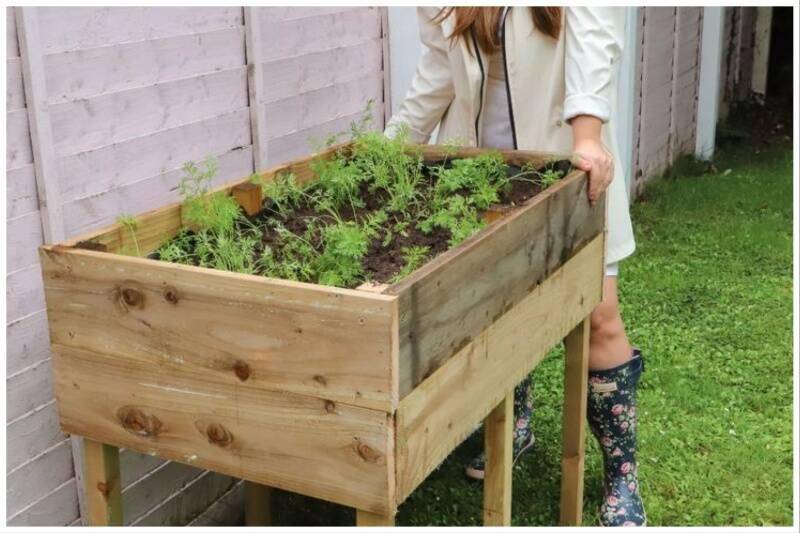
Build raised garden beds using reclaimed materials like old fencing, pallets, or even broken concrete pieces. These upcycled beds add character to your garden while providing excellent growing conditions for plants. Paint or stain the wood for a cohesive look.
Raised beds offer better drainage, soil control, and easier access for gardening. They’re perfect for growing vegetables, herbs, or creating defined flower beds in your garden layout.
17. Craft Hanging Planters from Colanders
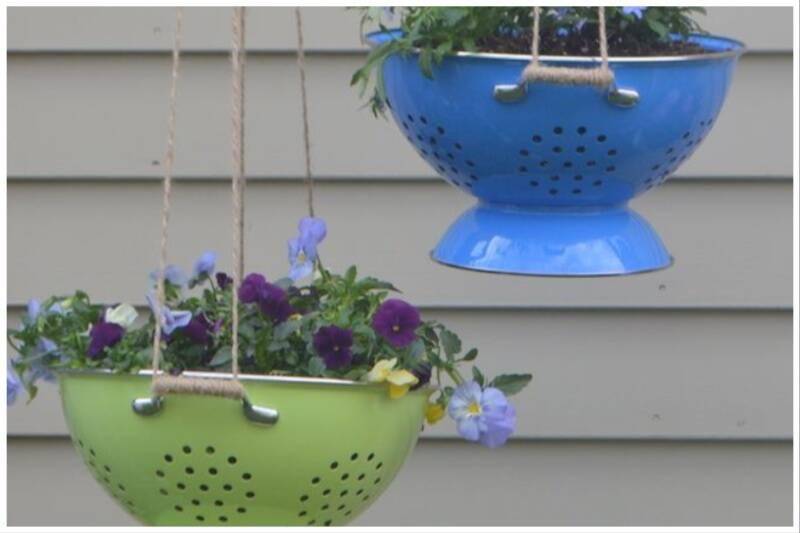
Transform old colanders into charming hanging planters. Spray paint them in your favorite colors and attach sturdy chains or ropes for hanging. Line the colander with moss or coconut fiber before adding soil and plants.
These unique planters are perfect for growing trailing plants or herbs. Hang them from pergolas, tree branches, or along fences to add vertical interest to your garden. The built-in drainage holes make them ideal for plants that prefer well-draining soil.
18. Embrace Natural Lawn Alternatives
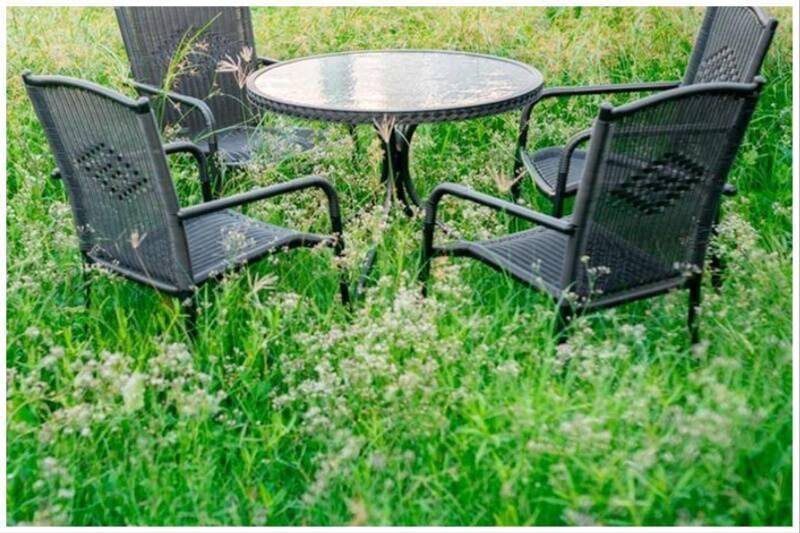
Consider replacing traditional lawn areas with low-maintenance alternatives. Allow parts of your lawn to grow wild with native grasses and wildflowers. This approach not only reduces mowing time but also creates a habitat for local wildlife and pollinators.
Incorporate clover, moss, or other ground covers that require less water and maintenance than traditional grass. These natural lawn alternatives can create a more diverse and ecologically friendly garden landscape.
19. Celebrate the Beauty of Weeds
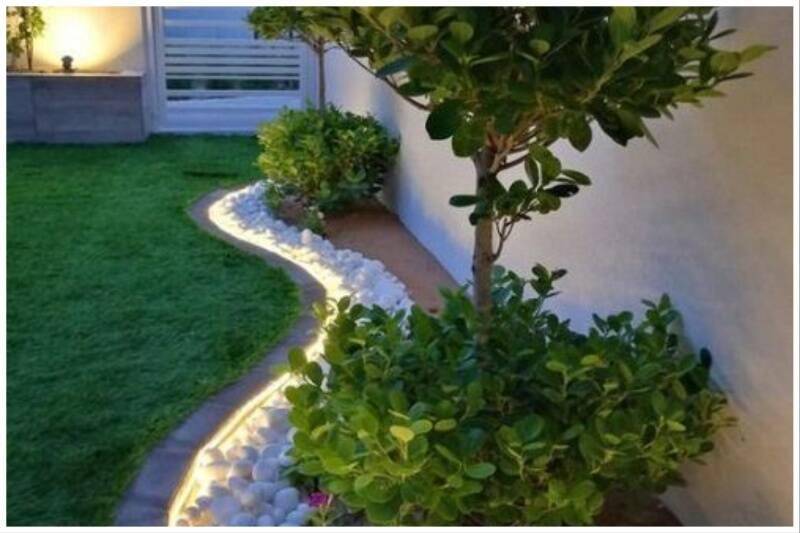
Change your perspective on weeds by incorporating them into your garden design. Many common weeds, like dandelions and clover, have beautiful flowers and can contribute to a wild, natural garden aesthetic. Learn to identify beneficial weeds and allow them to grow in controlled areas.
Trim and shape these wild plants to fit your garden design. This approach not only saves time on weeding but also creates a more diverse and resilient garden ecosystem.
20. Create a Gardener’s Workstation
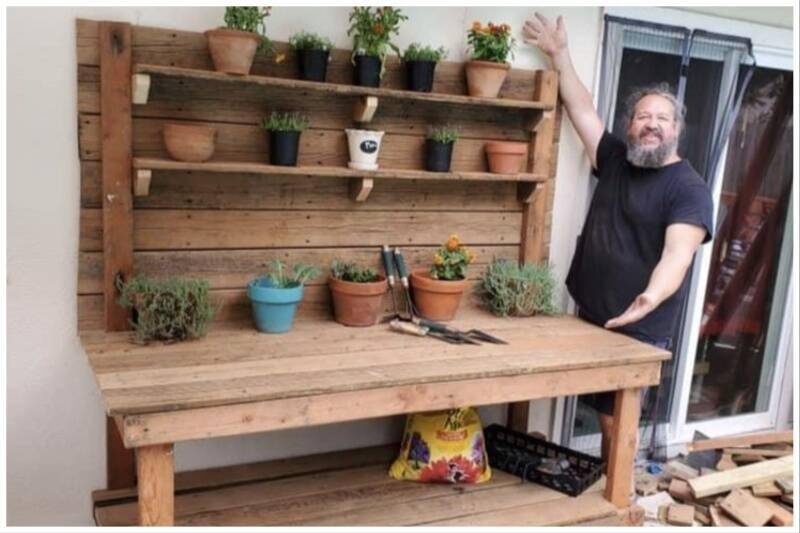
Set up a dedicated gardening workstation to keep your tools organized and make potting and planting more efficient. Repurpose an old dresser or cabinet as a potting bench, adding a countertop for workspace. Install hooks and shelves to store tools, pots, and supplies.
Paint your workstation to match your garden theme and add personal touches like vintage garden signs or decorative elements. A well-organized workstation not only makes gardening tasks easier but also serves as an attractive garden feature.
21. Transform Barrels into Mini Ponds
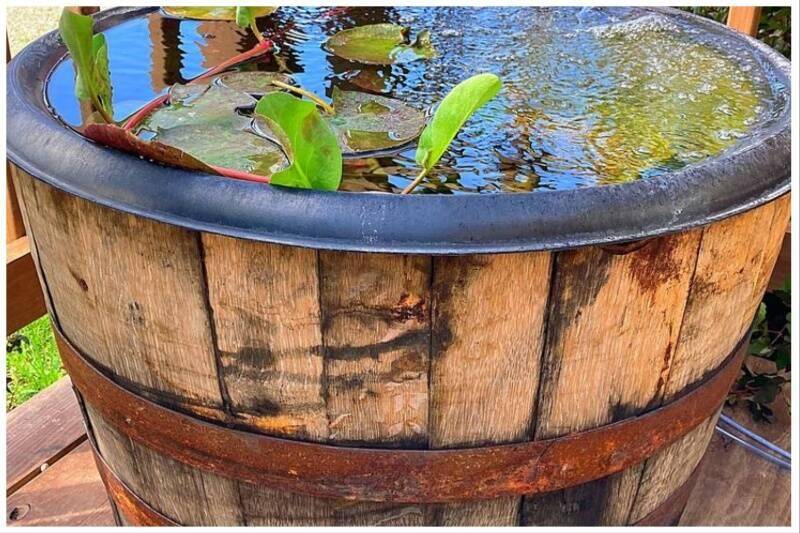
Create charming mini ponds using old wooden barrels or large containers. Seal the barrel to make it watertight, then fill it with water and aquatic plants. Add rocks or driftwood to create a natural-looking habitat for small fish or water-loving insects.
These compact water features add a soothing element to your garden and attract wildlife. Place them near seating areas to enjoy the relaxing sound of water and watch dragonflies and birds visit your mini oasis.
22. Craft DIY Plant Markers
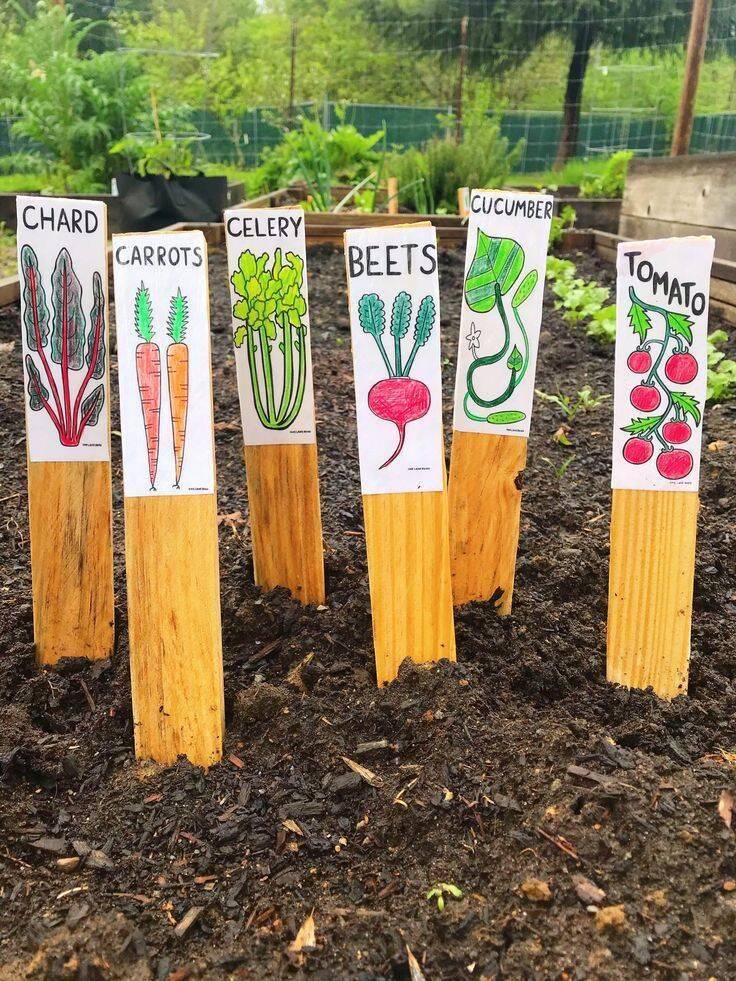
Make custom plant markers to keep your garden organized and add a personal touch. Use painted rocks, wooden spoons, wine corks, or repurposed silverware as unique markers. Write plant names with permanent markers or use small chalkboard tags for flexibility.
Get creative with designs and colors to match your garden theme. These homemade markers not only serve a practical purpose but also add charm and character to your plant beds and containers.
23. Upcycle Wooden Crates for Vertical Gardens
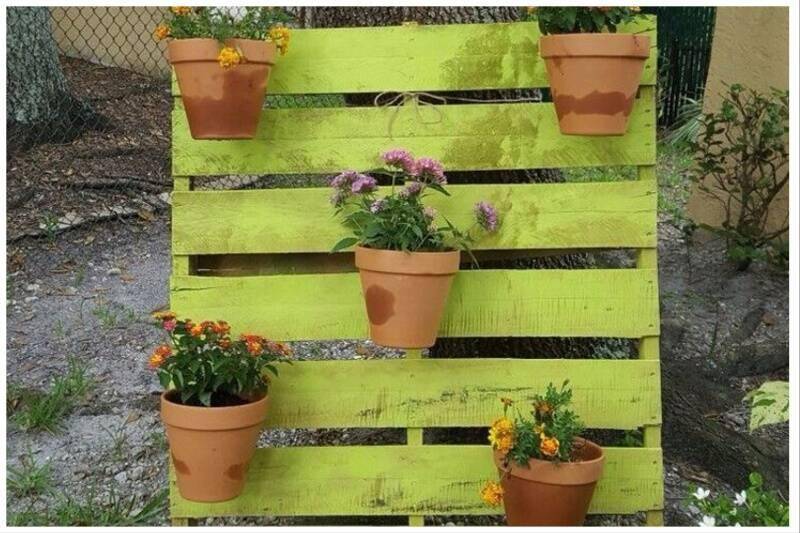
Repurpose old wooden crates or pallets into vertical garden structures. Sand and paint the wood, then attach them securely to a wall or fence. Fill the crates with soil and plant a variety of herbs, succulents, or trailing flowers.
These vertical gardens are perfect for small spaces and add a rustic, industrial charm to your outdoor area. Arrange the crates in interesting patterns to create a living wall of plants that doubles as garden art.
24. Repurpose Birdbaths as Unique Planters
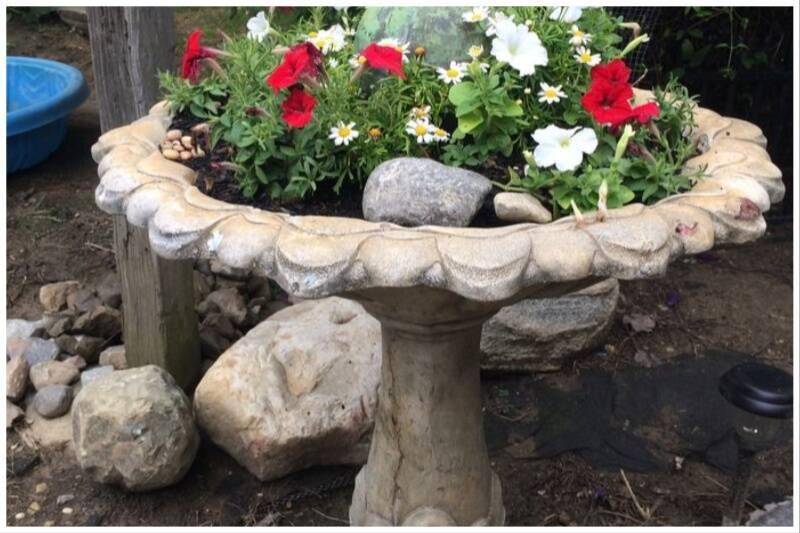
Give old birdbaths new life by transforming them into eye-catching planters. Fill them with soil and plant succulents, colorful annuals, or trailing vines. For better drainage, drill small holes in the bottom or add a layer of gravel before the soil.
Place these repurposed birdbath planters throughout your garden as focal points, or use them to add height variation to your plant displays. Their unique shape and history add character and whimsy to your garden design.
25. Create a Faux Grass Pathway
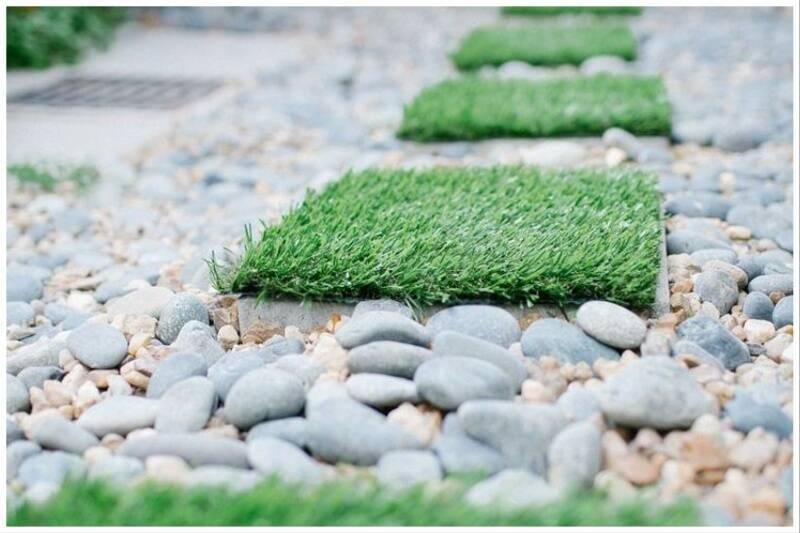
Design an inviting garden path using artificial grass or recycled carpet. Cut the material to fit your desired pathway shape and secure it over existing concrete or compacted soil. This creates a soft, green walkway that requires no mowing or watering.
Edge the path with stones, bricks, or wooden planks for a polished look. This low-maintenance solution is perfect for high-traffic areas or regions where real grass struggles to grow.

